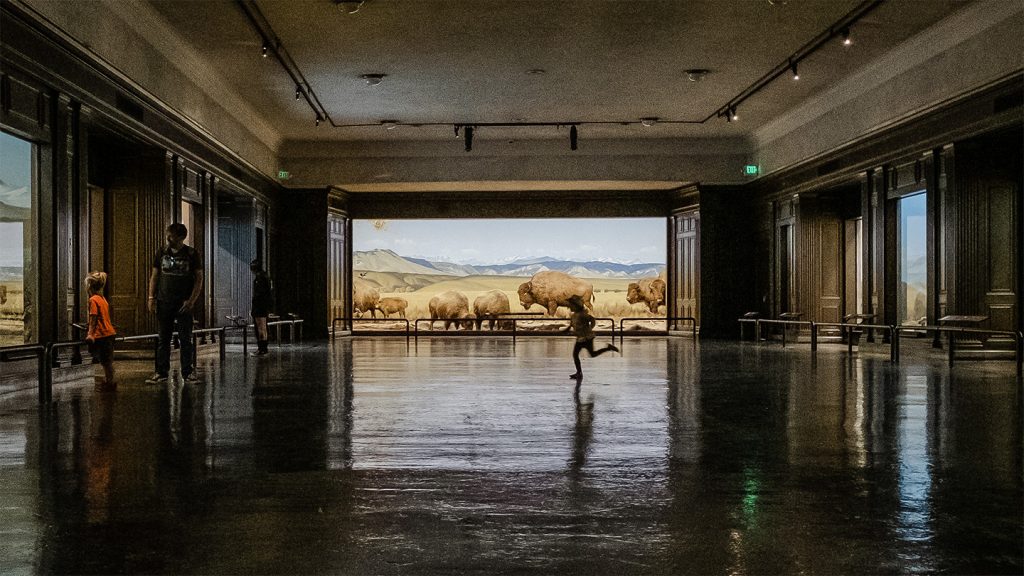Dioramas, those seemingly static displays of taxidermied animals in meticulously crafted environments, hold a far richer history and deeper impact than one might assume. From their inception in the late 18th century by naturalist Charles Willson Peale, dioramas have served as windows into the natural world, offering glimpses of far-off ecosystems and captivating audiences with lifelike representations of animals in their presumed natural habitats. While early iterations focused on individual specimens, the turn of the 20th century saw the rise of the habitat diorama, a format significantly influenced by popular entertainment forms like panoramas. These dioramas incorporated rich backgrounds, detailed foregrounds, and carefully posed animals, creating immersive scenes that aimed to both entertain and educate.
The advent of ecology as a scientific discipline coincided with the growing popularity of dioramas. These displays became powerful tools for illustrating ecological principles, showcasing the interconnectedness of organisms and their environments in a way that individual specimens could not. Taxidermists like Carl Akeley championed this new form of edutainment, leading expeditions to procure specimens and meticulously recreating their natural settings within museum walls. However, these expeditions, often targeting prized male specimens of endangered animals, were imbued with a paradoxical tension. While proponents argued that displaying these animals fostered conservation efforts by raising awareness and preserving their likeness for posterity, the practice also reflected a colonialist mindset and a disregard for the intrinsic value of wildlife.
The creation of dioramas was not solely the domain of male hunters. Women like botanist Alice Eastwood and Delia Akeley played significant roles in these expeditions, collecting plant samples, insects, and other scientific data. These collections helped inform the recreation of accurate habitats within the dioramas and contributed to the museum’s research collections. Furthermore, the concern for extinction driving these early diorama makers fueled genuine conservation efforts. Akeley’s experience with mountain gorillas led to the establishment of Virunga National Park, and William Temple Hornaday’s dismay at the decline of the American bison population resulted in the founding of the National Zoological Park.
Despite their initial popularity, dioramas faced increasing scrutiny in the late 20th century. Critics, like Donna Haraway, challenged the focus on male hunters and prize specimens, while others questioned their scientific accuracy and relevance in an age of multimedia and interactive exhibits. Some institutions, including the Smithsonian’s National Museum of Natural History, dismantled their diorama halls, opting for more modern displays. However, research commissioned by the Oakland Museum of California revealed that dioramas remained highly popular among visitors, second only to dinosaurs in attracting attention. This renewed appreciation prompted museums to reconsider their approach, leading to restoration efforts and a focus on “reframing” dioramas for contemporary audiences.
Modern museums are grappling with the complex legacies of their diorama collections. The “diorama dilemma” entails acknowledging and addressing the historical biases embedded within these displays, such as the emphasis on nuclear family groupings, the underrepresentation of females, and the romantic portrayal of a pristine “wilderness” devoid of human impact. Current initiatives, like the “Reframing Dioramas” exhibit at the Natural History Museum of Los Angeles, aim to contextualize dioramas as historical artifacts while simultaneously incorporating contemporary scientific understanding and artistic interpretations. These reframed exhibits explore the nuanced relationship between humans and nature, highlighting the impact of human activities on ecosystems and prompting reflection on our role in conservation.
The human element in dioramas presents a particular challenge. While some early displays completely omitted human presence, erasing the history of indigenous communities and the impact of modern societies, others included problematic depictions of human figures, often steeped in racist and colonialist stereotypes. Museums are now actively addressing these issues, adding contextual information, correcting inaccuracies, and in some cases, even removing offensive displays entirely. The Carnegie Museum’s decision to dismantle “Lion Attacking a Dromedary,” a display with a long history of problematic representations and containing actual human remains, exemplifies this shift towards acknowledging and rectifying past injustices. The future of dioramas rests on this ongoing process of reframing, which seeks to balance the historical significance of these displays with the need for scientific accuracy, social responsibility, and the ongoing evolution of our understanding of the natural world.


